In the mid-1930s, passenger service on the Pennsylvania Railroad was in trouble. The Pennsy was the largest railroad with the largest fleet of passenger trains in the world. Like all railroads, the Pennsylvania was hurt by the Depression, but as the nation was emerging from its economic doldrums, PRR was having a hard time competing against its rivals. In the New York-Chicago market, the 20th Century Limited consistently outperformed the Broadway, which carried an average of just 30 to 35 passengers per trip. In the Washington-Chicago market, B&O’s Capitol Limited was faster than the Pennsylvania’s Liberty Limited.
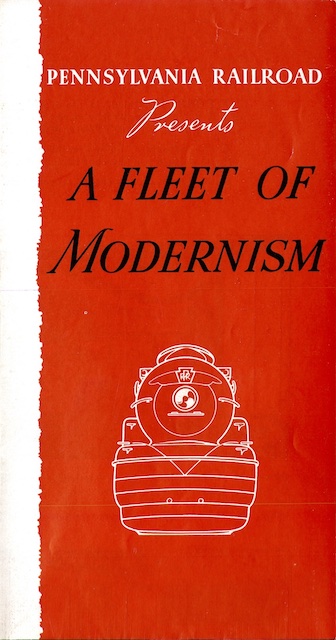 Click image to download a 2.4-MB PDF of this brochure.
Click image to download a 2.4-MB PDF of this brochure.
While western railroads were streamlining and Dieselizing, the staid Pennsylvania was reluctant to do either. This led it to particularly fall behind the B&O, which in 1938 purchased General Motors’ E unit locomotives — in my opinion, along with the Santa Fe E1s, the most beautiful and elegant passenger locomotives ever designed — to pull a heavyweight Capitol Limited that had been cosmetically streamlined by B&O shops.
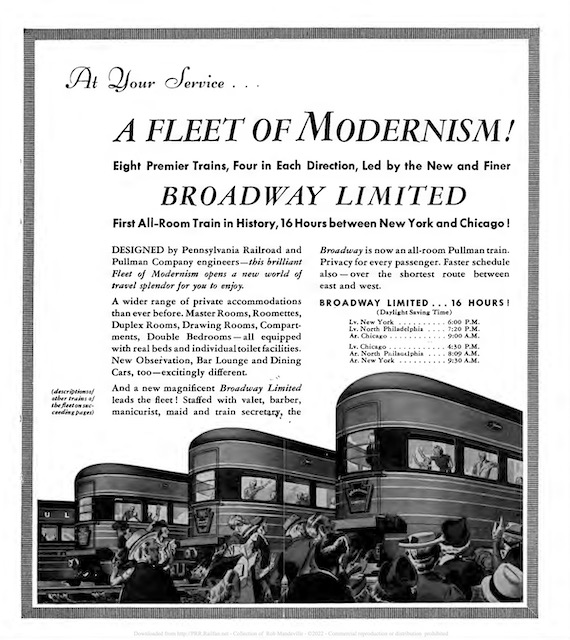 This ad from the July 1938 Pennsylvania timetable introduces the Fleet of Modernism with emphasis on the Broadway Limited.
This ad from the July 1938 Pennsylvania timetable introduces the Fleet of Modernism with emphasis on the Broadway Limited.
It was the New York Central’s decision to streamline the 20th Century, however, that finally got PRR moving. Although the Pennsylvania considered buying an entire streamlined train, as the Union Pacific and other western railroads did, it instead placed an order for streamlined sleepers from Pullman, including round-tailed observation cars, while it cosmetically streamlined coaches, diners, and other cars. The cars were painted in a two-tone red with gold stripes scheme developed by Raymond Loewy.
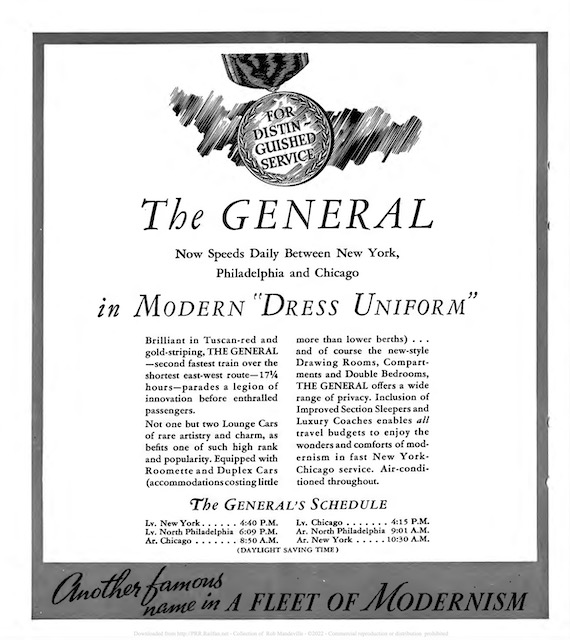 The General had been introduced in 1937 as a slightly slower alternative to the Broadway. This ad is also from the July 1938 timetable.
The General had been introduced in 1937 as a slightly slower alternative to the Broadway. This ad is also from the July 1938 timetable.
On June 15, 1938, Pennsylvania introduced this new and rebuilt equipment on four trains: the Broadway, Liberty, General, and Spirit of St. Louis. None of these trains had all-new equipment; even the Broadway relied on rebuilt, heavyweight diners and baggage cars. Nor were any pulled by Diesels; the Pennsylvania instead relied on some experimental steam locomotives, streamlined by Loewy, to haul the trains.
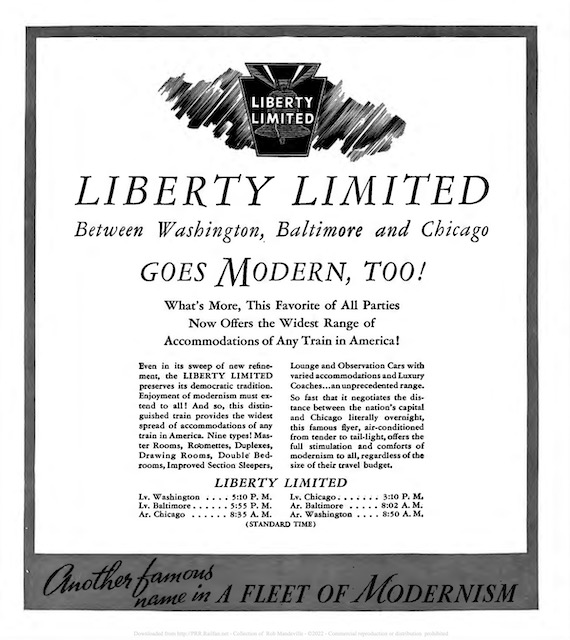 The Libert Limited was PRR’s answer to the B&O’s Capitol Limited. This ad is also from the July 1938 timetable.
The Libert Limited was PRR’s answer to the B&O’s Capitol Limited. This ad is also from the July 1938 timetable.
Hoping that a slogan would cover up these inadequacies, the Pennsylvania described these trains as the “Fleet of Modernism.” It obviously wasn’t really that modern if it used older cars and an increasingly dated form of locomotion.
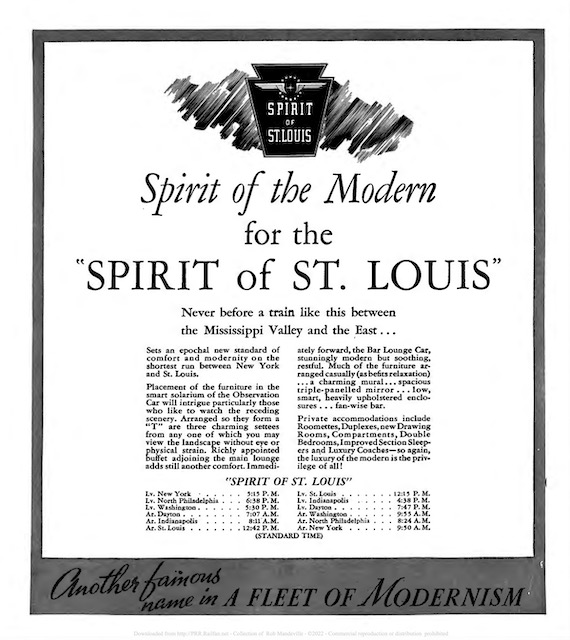 The Spirit of St. Louis was PRR’s train from New York/Washington to St. Louis. This ad is also from the July 1938 timetable.
The Spirit of St. Louis was PRR’s train from New York/Washington to St. Louis. This ad is also from the July 1938 timetable.
Slogans apparently weren’t enough. In 1939, the 20th Century Limited average four times as many passengers as the Broadway. The Pennsylvania was particularly embarrassed on August 5, 1939, when the Broadway left New York City without any passengers, picked up two passengers in Philadelphia, and they were the only two carried for the entire trip. The railroad kept operating the train solely for the prestige factor, but it took World War II to increase travel demand enough to fill the seats and beds on this and other Pennsylvania trains.

It is interesting to note, however, that the Broadway Limited remained a great train with all Pullman status for almost a decade after the New York Central added coaches to the Twentieth Century Limited and the downgrades began.
Most Beautiful Diesel Locomotive: Alco PA
Runner Up: EMD E9
JW,
True, insofar as it went. Prior to Central’s throwing in the towel and adding coaches to the Century, Pennsy had been deferring maintenance on its passenger fleet, even the cars assigned to the Broadway. Once Central caved in, the maintenance rules were relaxed and Pennsy’s passenger officers were ordered to “fly the flag.” Pennsylvania made one last effort in 1965 to promote the Broadway, but by 1967 the end was getting close. Once Central discontinued the Century, Pennsylvania concurrently took all-Pullman numbers 28 and 29 off, and transferred the name to coach-and-Pullman numbers 48 and 49, previously the General.